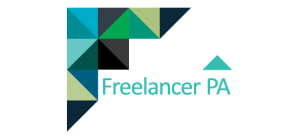
In recent years a diverse range of online tools have been developed to help us manage our tasks, some of my favourite include Asana, Trello, and Monday.com. These platforms are great for individuals and teams working to manage projects in any industry. They are free to use with additional premium features which can be paid for.Task management tools help us to focus on what we do best: by relying on the tool to store and track the task-related detail and information for you, you can free up space in your mind to focus on the work itself. These tools facilitate better work productivity by allowing you to manage workloads, never miss deadlines, and to collaborate more efficiently with teammates.
How do these tools work?
Trello, for example, provides you with a ‘board’ that you fill with different ‘cards’ (your tasks) that can be moved between vertical lists (the way you choose to organise or categorise your tasks). Each card can be commented on, updated, have its own to-do list, tagged team mates, due dates, attached files and more.
Creating a list on Trello is easy and personalised – you may like to have one representing what you will focus on today, one for next week, or one with brand new tasks waiting to be categorised. You could have ‘urgent’ and ‘non-urgent’ lists, lists for each team member or client, or perhaps a list for each stage of work depending on your business. Each list can have specific colour coded labels to apply to each individual card within that list, helping to further define each task. Cards can be easily dragged and moved between lists as they progress.
I personally recommend checking your Trello board each morning to review and update your tasks: add any meetings or calls from your calendar, determine which tasks need to be completed today and move any that require different prioritisation. How you design your board is completely up to you and what works best for your business.
Which tool is right for me?
Depending on your business and how you like to operate, one of these tools will be more suited than the others. To help you identify which is best for you, I have set out some of the pros and cons that I have found for each tool. Please get in touch if you’re still unsure which will be best for you and I will help match you and your business to the right task management tool.
Asana
Pros
|
Cons
- Since the program is heavily text based, it’s easy to accidentally break structure, remove a task, or change its naming.
- Due to the multiple features, projects can get complex or confusing.
- You cannot assign multiple people to the same task with Asana.
- There is no way to track time.
Trello
Pros
|
Cons
|
Pros
|
Cons
|
Now that you’re ready to start managing your tasks online and more efficiently, take a moment to consider other aspects of your business that could be improved. Are you using email automation and Cloud-based filing systems yet? Check out my blog post on how to get started.
If you are interested to find out what services and support we can offer you, click here to learn more.
![]()
